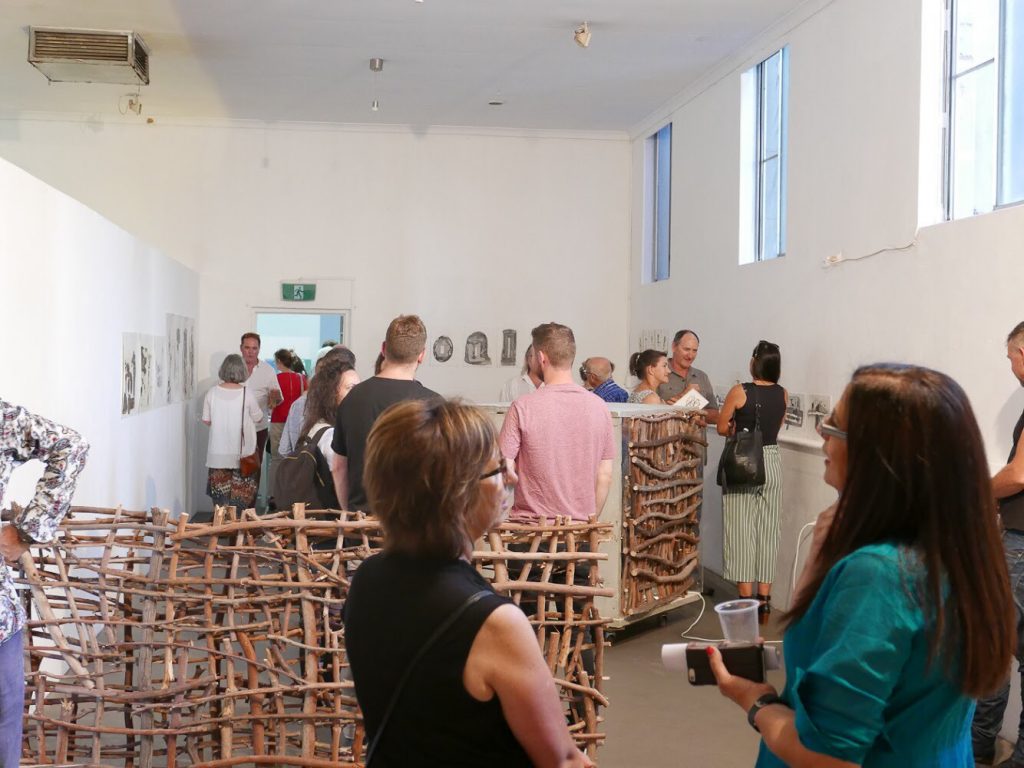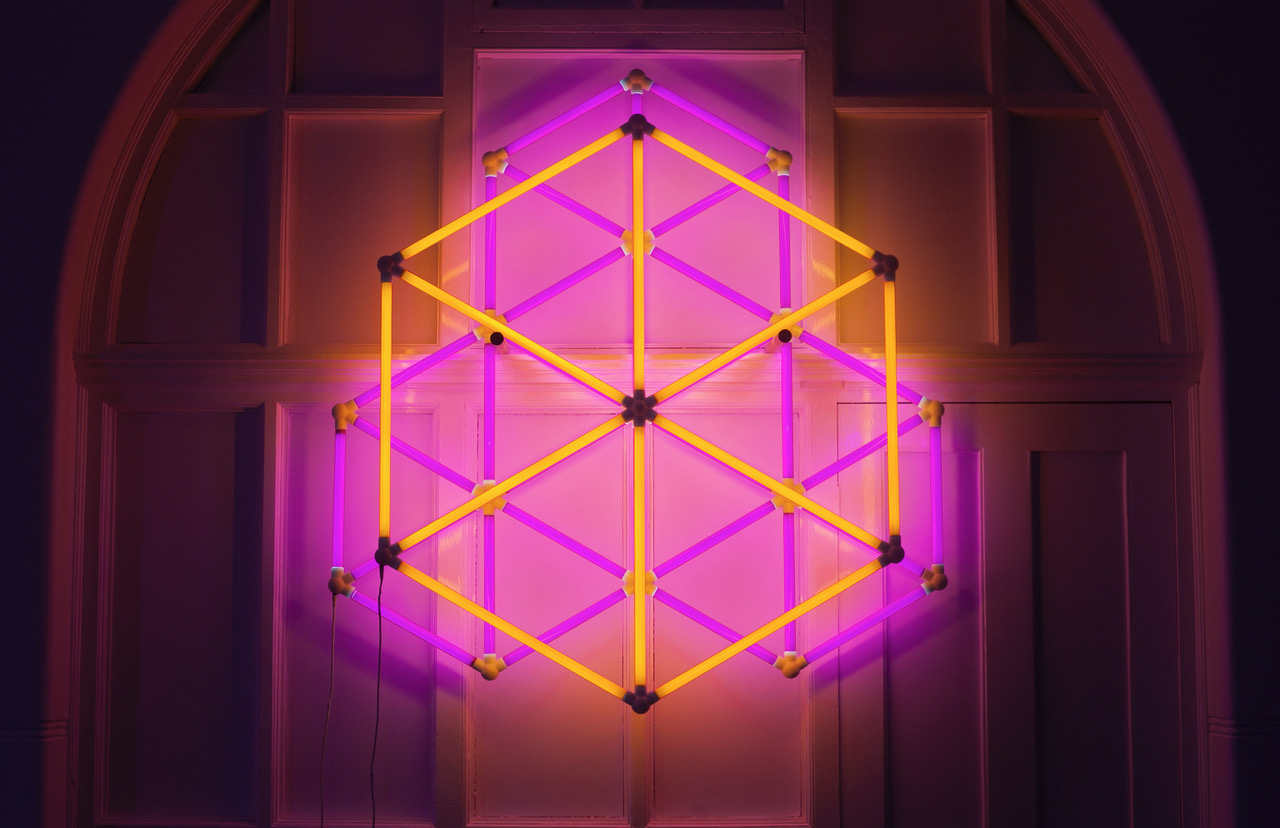Artist-run galleries form a vital part of the visual arts ecosystem, acting as breeding grounds for new ideas and practices, as well as bringing vitality to our cities and towns. But finding an affordable and secure lease can be a massive challenge, writes Nina Levy.
A space of one’s own
18 January 2018
- Reading time • 8 minutesVisual Art
More like this
- A walk with Tina Stefanou
- A blaze of glorious people
- Diving into the gothic world of Erin Coates
The sudden closure of Moana Project Space late last year came as a shock to the visual arts community. The artist-run initiative (ARI) had occupied a space on Hay Street for five years and was forced to vacate the premises in November, cutting short Tom Blake’s “downstream dreams”, an exhibition which had opened just days earlier.
Co-director Miranda Johnson explains that Moana Project Space acquired the lease on the Hay Street gallery back in 2012, through Spacemarket, a company that acts as an interface between owners/managers of empty spaces and people, such as independent designers and artists, who want space but may not be able to access it for various reasons, including cost. One of Spacemarket’s best-known projects is Many 2.0 in Fremantle. The Moana Chambers project was one of the company’s first ventures, incorporating a cafe, gallery and studio spaces for freelancers.
“The lease for the Moana Chambers floor was always a five-year term, so Spacemarket had warned us it would need to be renegotiated in November, but they were confident that their lease would be renewed,” says Johnson. “However, the owners decided not to renew Spacemarket’s lease on the floor because the owners decided it would be more lucrative leasing it to someone else. I believe there was quite a lot of negotiation behind the scenes, but they couldn’t come to an agreement.”

The concept of letting unused real estate cheaply to artists is not a new one. One of the best-known Australian examples is Renew Newcastle, a project that was founded in 2008 by Marcus Westbury to match artists and creative projects in need of space with empty shops and offices in the then-rundown Newcastle CBD. The project saw numerous artists occupying unused space, which then attracted commercial tenants back to the area. It is widely acknowledged that the project was responsible for the upturn in the fortunes of a formerly declining area of the city.
Importantly you don’t have to wait to be picked up or noticed by a supposedly sanctified second or third party. You can play, experiment and take risks.
While there is plenty of empty space in Perth, however, it’s not easy for ARIs to find a home. Penny Bovell, West Australian artist and chair of WA’s peak body for visual arts, Artsource, explains. “The business sector has to acknowledge that making a profit is not always the answer. Social and ethical transactions can have far more value. There has been much research done about the benefits of artists activating and maintaining spaces, building communities, attracting people and making communities safe. The list goes on.
“It is, however, important to note that whilst artists activate space well, they need clearly identifiable support such as security of a lease and cost-effective rents in relation to their low incomes. I find it very sad that there are so many empty buildings across the suburbs because landlords are holding out for high rental returns.”
In addition to bringing vibrancy to business or retail areas ARIs are vitally important to the development of individual artistic practice, says Bovell, allowing artists the freedom to experiment. “Being involved in an ARI means you have control, you can direct your own career, market and present your work in a way you choose,” she remarks. “Importantly you don’t have to wait to be picked up or noticed by a supposedly sanctified second or third party. You can play, experiment and take risks – these are very important attributes to foster throughout an artist’s career.”

And ARIs aren’t just for early career artists, she adds. “It is generally accepted that ARIs offer an essential incubating environment for emerging artists but I would argue it is important to be involved in ARIs throughout one’s career. Creative people have to make things happen for themselves. A good example of this the ArtCollectiveWA, a not-for-profit made up of well established artists whose task is to support the director with the business of running the gallery and ensuring its financial viability.
The business model for an ARI is frustratingly tenuous. It’s built on high ideals (which I like), hard work and usually involves very little financial reward (if any).
While it all sounds idyllic, the financial reality of running an ARI is anything but, observes Bovell. “The business model for an ARI is frustratingly tenuous. It’s built on high ideals (which I like), hard work and usually involves very little financial reward (if any).”
So why do artists bother?
“The lack of financial reward doesn’t stop artists from setting up ARIs because they are deeply satisfying and exciting ventures to be involved with,” replies Bovell. “Edgy, inventive and enterprising, they are a way of participating in the business of art without the expectations and encumbrances of established gallery and institutional models.”
Not surprisingly, though, there are casualties, says Bovell. “If only ARIs could be self-sufficient and sustainable but sadly people involved in ARIs often burn out and this can become debilitating and demoralising, with artists forced to leave the sector,” she comments.
It’s in response to such challenges that Artsource has planned a new key service for artists in 2018. “We have opened up our magnificent Atrium space to encourage ARI activity,” reports Bovell. “Currently Bennett Miller from Social Media is using the ground floor of Old Customs House (OCH) Fremantle to execute projects with our broad base of members. Other ARIs are encouraged to collaborate and we aim to grow professional development opportunities from the OCH hub.”
It’s a step in the right direction.
If you have any leads for a CBD space for Moana please contact info@moana-ari.com
What is an “ARI”?
“An Artist Run Initiative is formed by a group of artists or creatives banding together to share skills, space and facilities. They collaborate or help each other with projects, exhibitions and events,” explains Bovell. “I like Paper Mountain’s definition “ARIs are loosely organised art collectives often occupying the marginal spaces of repurposed buildings.”
A non-exhaustive list of some of WA’s currently operating ARIs:
- Another (Bassendean)
- Art Collective WA (Perth)
- Bench Press Print (independent printing press, North Perth)
- Free WIFI (Bunbury)
- Gotham Studios (Northbridge)
- Paper Mountain (Northbridge)
- Moana Art Space (Currently closed)
- Polizia (Fremantle)
- PS Art Space (Fremantle)
- Rob Park Art (West Perth)
- Smart Casual (Fremantle)
- Success (Fremantle)
- Wayward Jewellers Society (Fremantle)
If you know of an WA ARI (metro or regional) that you would like to see added to this list please email hello@seesawmag.com.au with the name of the ARI, its street address (suburb or town) and a link to its website.
Top image: Artwork by George Howlett for “High Visions”, exhibiting at Old Custom’s House, Fremantle, until 11 February 2018 . Photo: Bennett Miller.
Like what you're reading? Support Seesaw.






